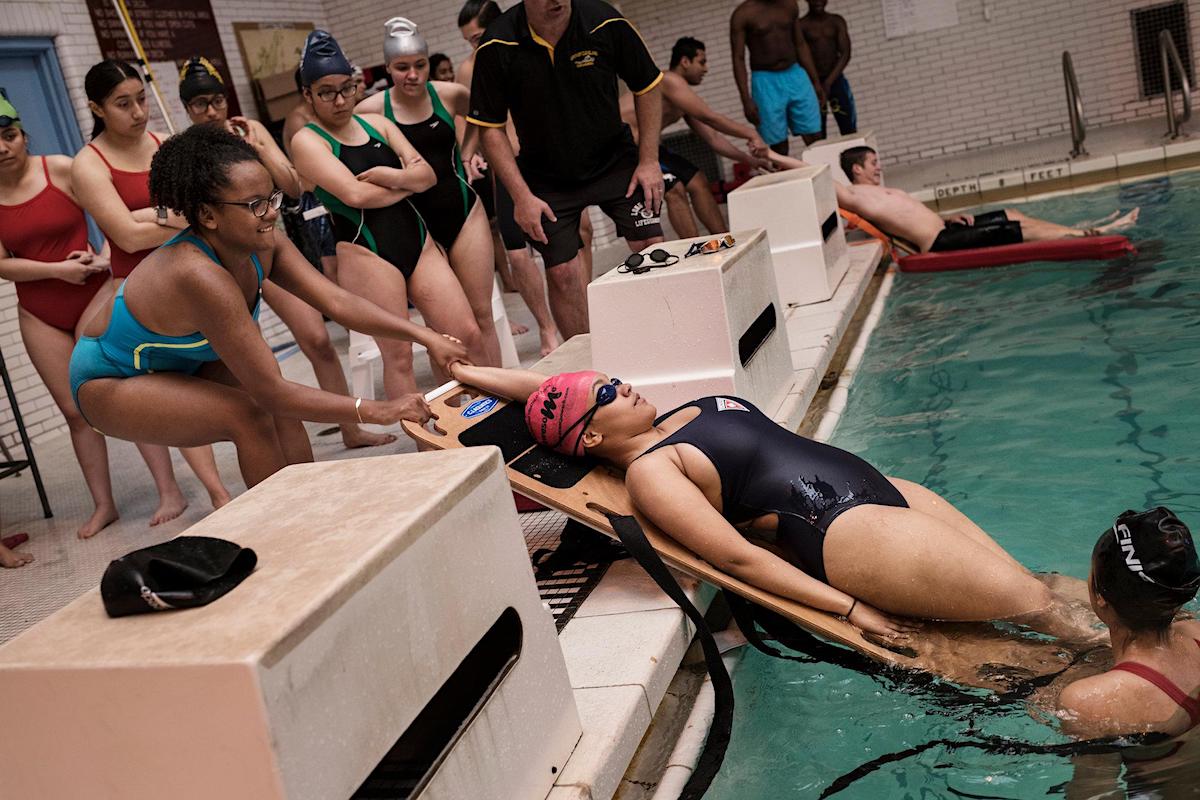Elsie Cordero, 16, pulls classmate Ashley Maria, 17, from the pool after a rescue by Angie Peña, 17, right. Credit Victor J. Blue for The New York Times. Featured Image
[dropcap]Down[/dropcap] at the deep end of Grover Cleveland High School’s aging four-lane pool, two students lie face down in the water, unresponsive.
“O.K., get them,” barked a swim teacher, and a group of chatty teenagers in swimsuits went into rescue mode and leapt into the water.
They hooked the “drowning” students — playing victims for a lifesaving drill — around the shoulders to swim them to safety.
“Don’t let them go, never let them go,” yelled the teacher, Chris Sullivan, 44, as the students slid a flat wooden backboard into the water to ease one of the struggling swimmers out. [mc4wp_form id=”6042″]
 Elsie Cordero, 16, pulls classmate Ashley Maria, 17, from the pool after a rescue by Angie Peña, 17, right. Photo Credit Victor J. Blue for The New York Times
Elsie Cordero, 16, pulls classmate Ashley Maria, 17, from the pool after a rescue by Angie Peña, 17, right. Photo Credit Victor J. Blue for The New York TimesThis was the scene the other day at one of the popular lifeguard training classes at Grover Cleveland, in Ridgewood, Queens — a high school that may not get the public recognition the city’s more prestigious schools enjoy, but that has the distinction of being one of the largest feeders of young lifeguards in New York City.
Equipped with its own working swimming pool, a rare commodity today in New York City public high schools, Grover Cleveland offers lifeguarding classes that lead to Red Cross certification.
Dozens of its students obtain lifeguard jobs every spring and go on to work at city beaches and pools — a remarkable feat, given that most of the students are from neighborhoods not known for turning out swimmers.
Yet, the school has produced more than 300 working lifeguards in the past decade, Mr. Sullivan said.


You must be logged in to post a comment.